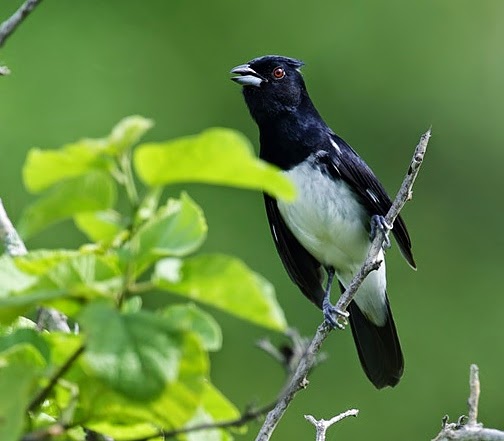 |
| Photo by Nick Athanas (Antpitta) |
Common name:
black-and-white tanager (en); tiê-preto-e-branco (pt); tangara à miroir blanc (fr); tangara albinegra (es); spiegeltangare (de)
Taxonomy:
Order Passeriformes
Family Thraupidae
Range:
This species breeds in the western slope of the Andes in south-western Ecuador and north-western Peru. They migrate east to winter on the eastern slopes of the Andes in Peruvian Amazonia and marginally into Brazil and Bolivia.
Size:
These birds are 16 cm long and weigh 23-28 g.
Habitat:
The black-and-white tanager breeds in deciduous woodland, gallery forests and riparian thickets up to an altitude of 1.950 m. outside the breeding season they move to lower altitudes and use the edges of tropical rainforests, second growths and riparian habitats.
Diet:
They feed on insects and seeds.
Breeding:
These birds breed in February-May. The nest is an untidy, loosely woven cup made of sticks and leaf petioles, lined with dark fungal rhizomorphs. It is placed in a small tree or scrub, 0,5-2,5 m above the ground. There the female lays 3-4 whitish to pale bluish eggs with reddish-brown and black speckles and blotches. There is no information regarding the incubation and fledgling periods.
Conservation:
IUCN status – NT (Near-Threatened)
This species has a relatively large breeding range, but is described as uncommon and patchily distributed. The black-and-white tanager is suspected to lose 10% of suitable habitat within its distribution over the next decade, based on a model of Amazonian deforestation and is therefore expected to suffer a small decline in the near future. It is threatened by deforestation and understorey degradation, which may be further isolating populations within its already disjunct range.







